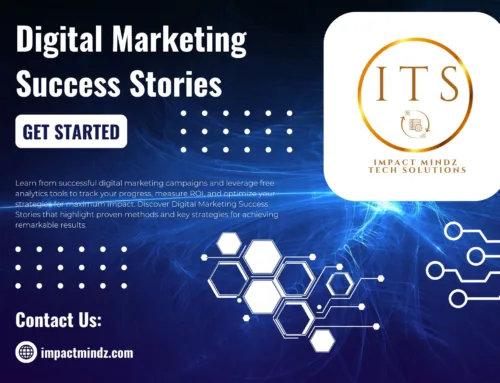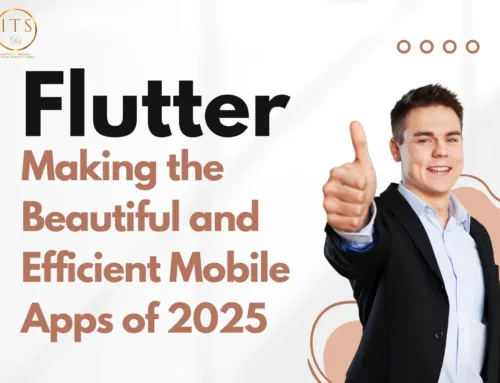Imagine walking into a store overflowing with merchandise, but with no clear aisles, confusing labels, and zero staff available for help. Frustrating, right? That’s the experience many users encounter online when websites are poorly designed. Elevating your brand, user experience (UX) design steps in, acting as the architect for a seamless and positive online journey.
At Impact Mindz Tech Solutions (link to UX design services page), we believe user experience is paramount in today’s digital landscape. Our team of talented UX designers prioritizes usability, accessibility, and aesthetics to create intuitive and visually appealing interfaces that engage users and drive results.
This blog post will explore the world of UX design, its benefits, key principles, and its impact on your business.
The User at the Center: Why UX Design Matters
Think about your online behavior. How often do you leave a website because it’s difficult to navigate? Or get frustrated with a confusing form? These are all examples of ineffective UX design. Conversely, a well-designed website feels intuitive, engaging, and effortless to use. This is the power of UX design: it puts the user at the center of the experience.
Here’s why a strong UX design strategy is crucial for your business:
Increased conversions: Good UX design simplifies the path to conversion, whether it’s making a purchase, signing up for a newsletter, or contacting you. Users are more likely to complete desired actions if the process is clear and frictionless.
Enhanced brand loyalty: A positive online experience fosters trust and strengthens your brand image. When users find your website easy to use and enjoyable to navigate, they’re more likely to return and become loyal customers.
Improved SEO: Search engines prioritize user-friendly websites. A well-structured website with clear navigation and fast loading times ranks higher in search results, leading to increased organic traffic.
Lower bounce rates: Bounce rate represents the percentage of visitors who exit a website after viewing just one page. Strong UX design keeps users engaged and reduces bounce rates, allowing you to deliver your message more effectively.
Data-driven insights: UX design utilizes user research and testing to gather valuable data on user behavior. This data can be used to continuously improve your website and marketing efforts for better results.
In short, investing in UX design isn’t just an aesthetic choice – it’s a strategic decision that drives conversions, builds brand loyalty, and ultimately, fuels your business growth.
Behind the Scenes: The Process of UX Design
Creating a positive user experience is a multi-faceted process. Our UX designers at Impact Mindz follow a strategic approach that involves several key steps:
1. User Research & Understanding:
The first step is understanding your users. This involves user research techniques like surveys, interviews, and user testing to gather insights into their needs, expectations, and pain points.
We delve into your target audience’s demographics, behaviors, and online habits. This deep understanding forms the foundation for crafting an experience that resonates with your ideal customer.
2. Information Architecture & Wireframing:
With user research insights in hand, our UX designers create a sitemap, which acts like a blueprint for your website, outlining the content hierarchy and how users will navigate between pages, all while focusing on elevating your brand. Wireframing then takes shape. Wireframes are low-fidelity, skeletal layouts of your website that map out the core visual structure and user flow. Usability testing is conducted at this stage to identify any potential navigation challenges.
3. Prototyping & User Testing:
Once the wireframes are approved, we move on to creating a prototype – a clickable, interactive version of your website. This allows users to interact with the design and experience the flow of information firsthand.
User testing is conducted again at this stage, and user feedback is carefully analyzed to further refine the design before moving on to visual elements.
4. Visual Design & User Interface (UI):
Now comes the fun part – the visual design! Our talented UI/UX designers create a visually appealing and user-friendly interface that aligns with your brand identity. This includes choosing fonts, color palettes, imagery, and ensuring the layout is both beautiful and functional.
Usability remains paramount. The visual design should complement the user flow and guide users intuitively towards their goals.
5. Testing & Iteration:
Testing is an ongoing process in UX design. Even after launch, we utilize analytics tools and user feedback to identify areas for improvement.
This iterative approach allows us to continually refine the user experience and ensure your website remains user-friendly and effective.
By following this comprehensive approach, our UX designers at Impact Mindz deliver exceptional user experiences that are crucial for elevating your brand and driving results for our clients. We’re committed to creating websites that not only look great but also perform exceptionally well in meeting user needs and business objectives.
Key Principles of UX Design
Successful UX design is guided by several key principles:
Usability: The website must be simple to navigate and user-friendly. Clear labels, intuitive navigation, and minimal clutter are essential.
Accessibility: The design should accommodate users with disabilities. This includes providing alternative text for images, proper heading structure, and keyboard navigation options.
Consistency: Consistent design elements throughout the website create a cohesive and familiar experience for users.
Speed: A fast-loading website is essential for both user satisfaction and SEO. Optimize images, reduce code, and use caching techniques to boost website performance.
Mobile-First Design: In today’s mobile-dominated world, designing for mobile devices first ensures a seamless experience across all screen sizes.
Feedback and Error Handling: Provide clear feedback to users, whether it’s confirming successful actions or guiding them through errors.
Testing and Iteration: Continuous testing and user feedback are essential for identifying areas for improvement and iterating on the design.
How UX Design Drives Business Success
When implemented effectively, UX design has a profound impact on a business’s success. Here are some key benefits:
Increased Conversions: A well-designed website with a clear user journey not only elevates your brand but also leads to higher conversion rates, whether it’s making a purchase, signing up for a newsletter, or contacting customer support.
Improved User Satisfaction: A positive user experience fosters satisfaction and loyalty. Users are more likely to return to websites that are easy to use and enjoyable to navigate.
Enhanced Brand Reputation: A well-designed website reflects positively on your brand. It conveys professionalism, credibility, and a commitment to customer experience.
Higher Search Engine Rankings: Search engines prioritize user-friendly websites. A website with a strong UX design is more likely to rank higher in search results, leading to increased organic traffic.
Reduced Support Costs: A well-designed website with clear information and easy navigation reduces the need for customer support. This saves time and resources for your business.
Real-World Examples of Exceptional UX Design
To illustrate how elevating your brand through the power of UX design can make a difference, let’s explore some real-world examples of websites that have excelled in delivering exceptional user experiences:
Airbnb: Airbnb’s website is a masterclass in simplicity and clarity. The search function is intuitive, listings are visually appealing, and the booking process is streamlined.
Zapier: Zapier has a clean and uncluttered interface that makes it easy to connect different apps and automate workflows. The visual flow guides users through the process seamlessly.
Mailchimp: Mailchimp’s user-friendly interface and helpful onboarding process make it easy for even non-tech-savvy users to create professional email campaigns.
Slack: Slack’s intuitive design and real-time communication features have revolutionized workplace collaboration. The chat interface is easy to navigate and the search function is powerful.
The Future of UX Design
As technology advances and brands strive to elevate their presence, user expectations will also continue to evolve. Here are some trends shaping the future of UX design:
Voice User Interfaces (VUIs): Voice-activated interfaces are becoming increasingly popular, requiring designers to consider how users will interact with websites and apps through voice commands, further enhancing the experience of elevating your brand.
Artificial Intelligence (AI): AI-powered features can personalize user experiences and provide intelligent recommendations.
Augmented Reality (AR) and Virtual Reality (VR): These technologies offer immersive experiences that can be used for product visualization, training, and entertainment.
Ethical UX Design: As technology becomes more pervasive, there is a growing emphasis on ethical UX design, ensuring that user experiences are inclusive, fair, and respectful.
Conclusion
User experience is the cornerstone of elevating your brand through successful digital products and services. By investing in UX design, you can create websites and apps that not only delight your users but also drive business growth. Our team at Impact Mindz Tech Solutions is dedicated to delivering exceptional UX design services that help you achieve your goals.
Contact us today to learn more about how our UX design expertise can transform your business.






